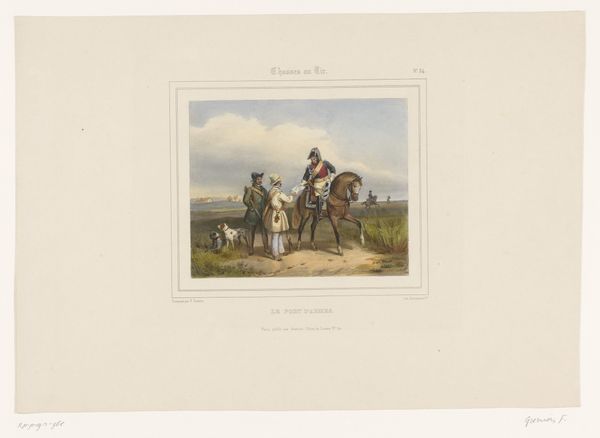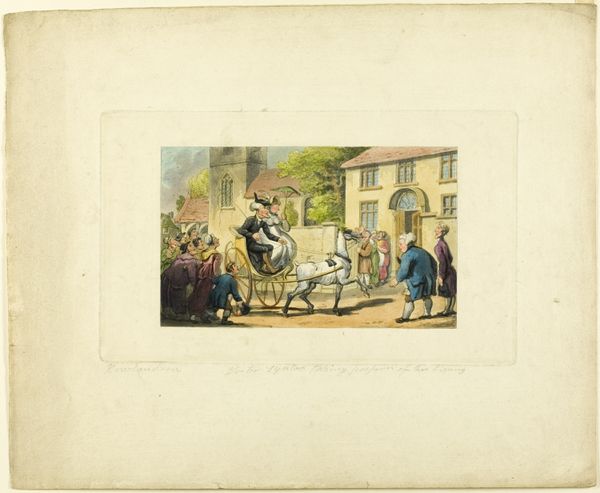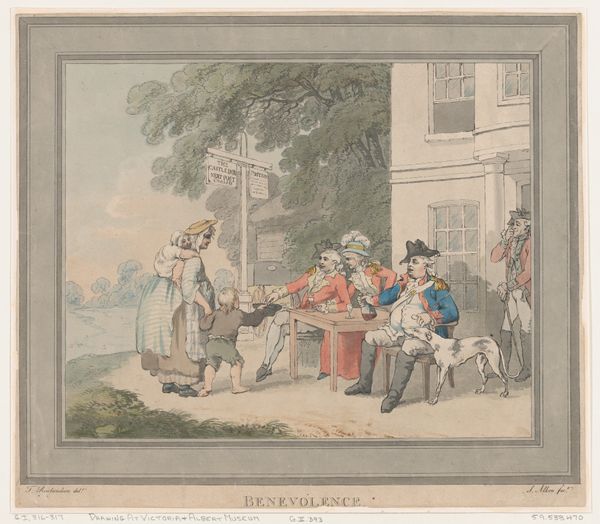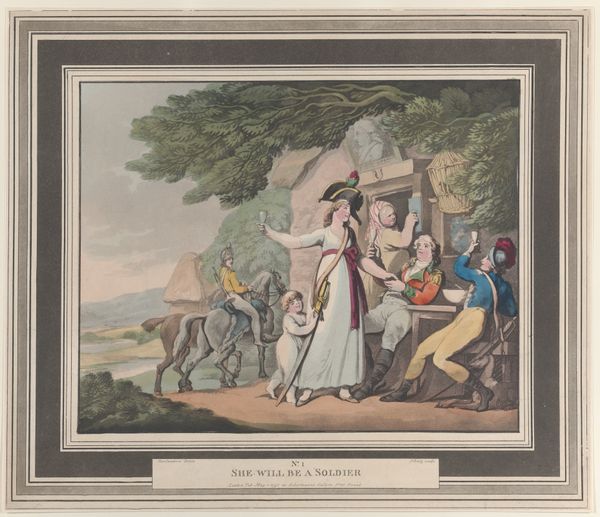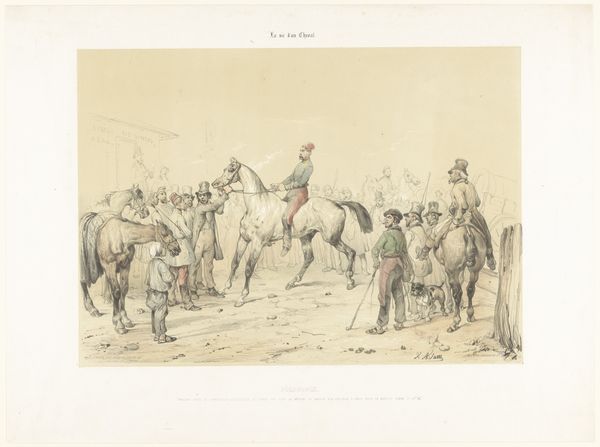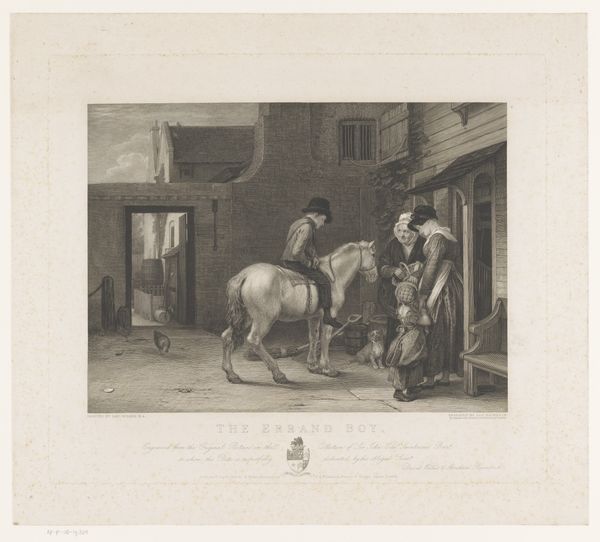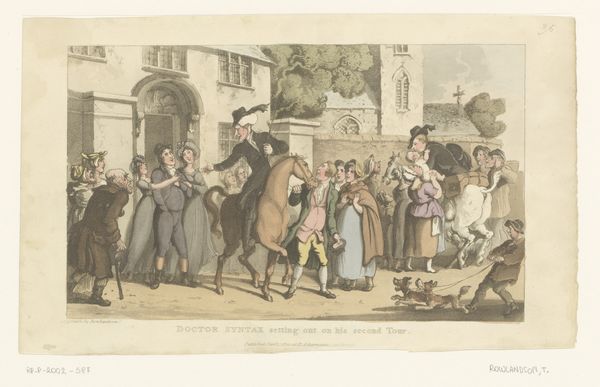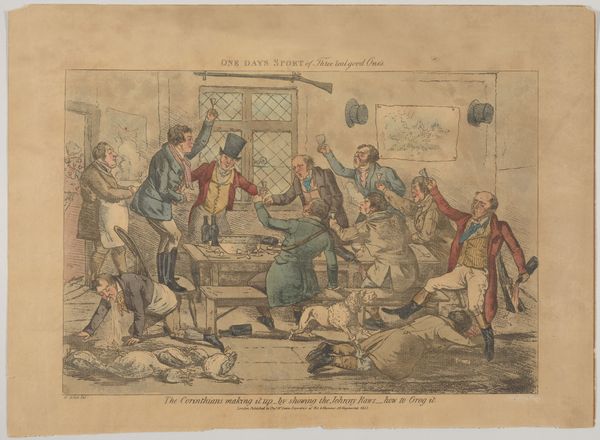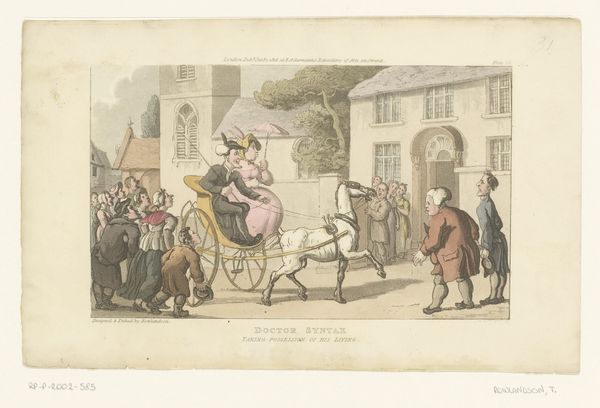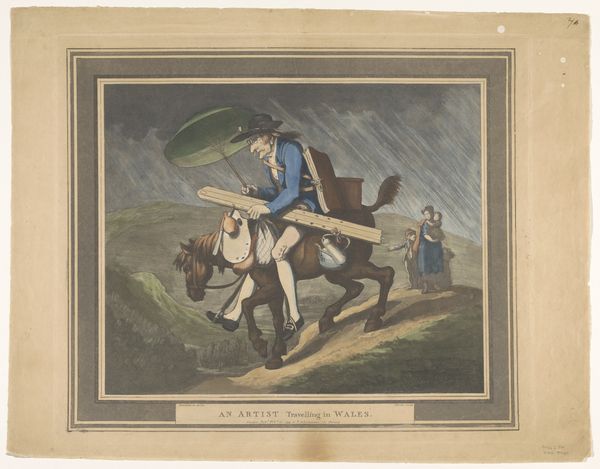
drawing, coloured-pencil, print, engraving
#
drawing
#
coloured-pencil
# print
#
caricature
#
coloured pencil
#
soldier
#
romanticism
#
genre-painting
#
history-painting
#
engraving
Dimensions: Sheet: 13 11/16 × 15 5/8 in. (34.8 × 39.7 cm)
Copyright: Public Domain
Curator: Immediately I notice how charmingly grotesque this image feels. The bulging man on the bench has such a casual presence, while the soldiers are quite refined. Editor: Indeed! We’re looking at Heinrich Joseph Schütz's “No. 2: He Won't Be A Soldier,” made around 1798. It employs coloured pencil and engraving. I find it fascinating how Schütz utilizes caricature in exploring themes of military recruitment during that period, especially considering the social pressures surrounding the French Revolution and the rise of nationalism. Curator: It’s so clearly satirical. Look at the stark contrast between the rural setting and the polished, almost theatrical soldiers on horseback. You have the farmer who appears relaxed while the officers loom and seem unperturbed, as if there is no issue they have arrived. The whole piece exudes an aura of forced enlistment or perhaps an economic coercion for military recruitment. Editor: Precisely. Schütz, I think, comments on the societal inequities inherent in military recruitment at the time. By contrasting the working class with the upper-class officers, it critiques how warfare affected different segments of society, specifically men with little land to their name. Think of who had to work vs. who was born to serve or lead. Curator: I'm also struck by how Schütz uses colour, particularly in the soldiers’ uniforms, to create a sense of otherness or separation from the community. This emphasizes the power dynamic at play, while elements such as the ale and loaf signal to the means for which many where able to be persuaded or "paid off". The family present seems unpleased. The drawing almost implies recruitment amounts to dispossession. Editor: Absolutely. Consider the materials themselves: the engraving implies a level of accessibility and broader dissemination. Schütz effectively critiqued power dynamics and labour relations by distributing it. Its reproductive method facilitated the discussion to permeate wider. I like the interplay between craft and the topic. Curator: The coloured pencil lends it a degree of immediacy and intimacy that adds a kind of tension and accessibility to his criticism. He takes what may appear as traditional tropes, only to upend their reading via critical juxtaposition. Editor: He is not so traditional and it's so interesting how seemingly 'quaint' artistic media can embed themselves in contemporary issues. Curator: It does cause a certain shift in perspective and expectation. Editor: Yes. Schütz and his process speak to how material conditions affect discourse.
Comments
No comments
Be the first to comment and join the conversation on the ultimate creative platform.
